The current Vietnamese currency in use is the Vietnam dong. Its symbol is ₫ while the code is VND. Vietnamese notes are a combination of paper bills and polymer bills, ranging in value from 500 VND to 500,000 VND.
Before leaving for a new country, many questions arise about the situation in that country: when is the best time to travel, and what are the best places to visit? Among these, there are some popular ones for those planning a trip to Vietnam about Vietnamese currency, like How to withdraw and exchange money in Vietnam. How to pay in Vietnam? Is cash or credit card more convenient? How is the travel tip in Vietnam? Further, we will reveal some interesting facts about Vietnam's money. See all the answers in this article!
1. General information on Vietnamese money
1.1 Vietnam's official currency
Currently, only the State Bank of Vietnam has the legal title to issue Vietnamese banknotes. According to current Vietnamese law, the Vietnam Dong is the only legal means of payment in Vietnam, which means that goods or services in the Vietnamese market must be listed in VND.
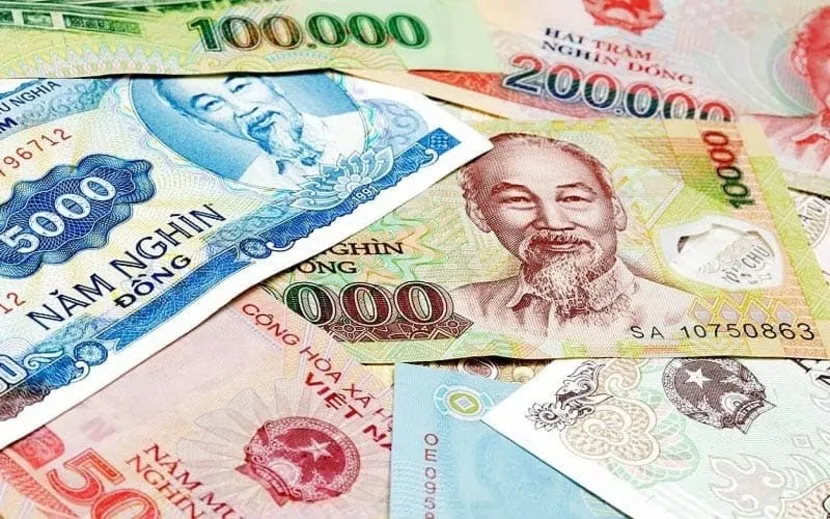
1.2. Denominations of Vietnamese currency
Banknotes in circulation in Vietnam range from 500 Dong to 500,000 VND. However, the habit of rounding and not saving the small Vietnamese denominations is causing the 500 Dong notes to disappear. Coins are available in 200 Dong, 500 Dong, 1000 Dong, 2000 Dong, and 5000 Dong, but due to inflation, they have not been minted since 2013. Because of their memory value, many decide to keep them for collection.
Currently, both polymer banknotes and paper banknotes are used in Vietnam.
- Polymer banknotes exist of 10,000 Dong, 20,000 Dong, 50,000 Dong, 100,000 Dong, 200,000 Dong, 500,000 Dong
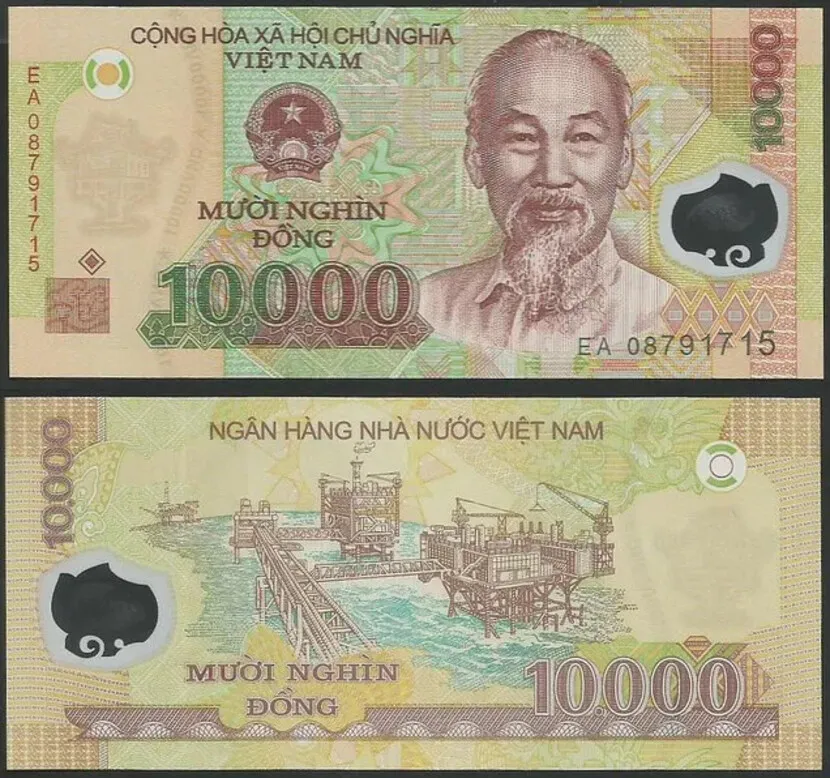
The 10,000 Dong banknote is yellow in colour and the image on the back depicts Vietnam's largest oil production plant in Vung Tau
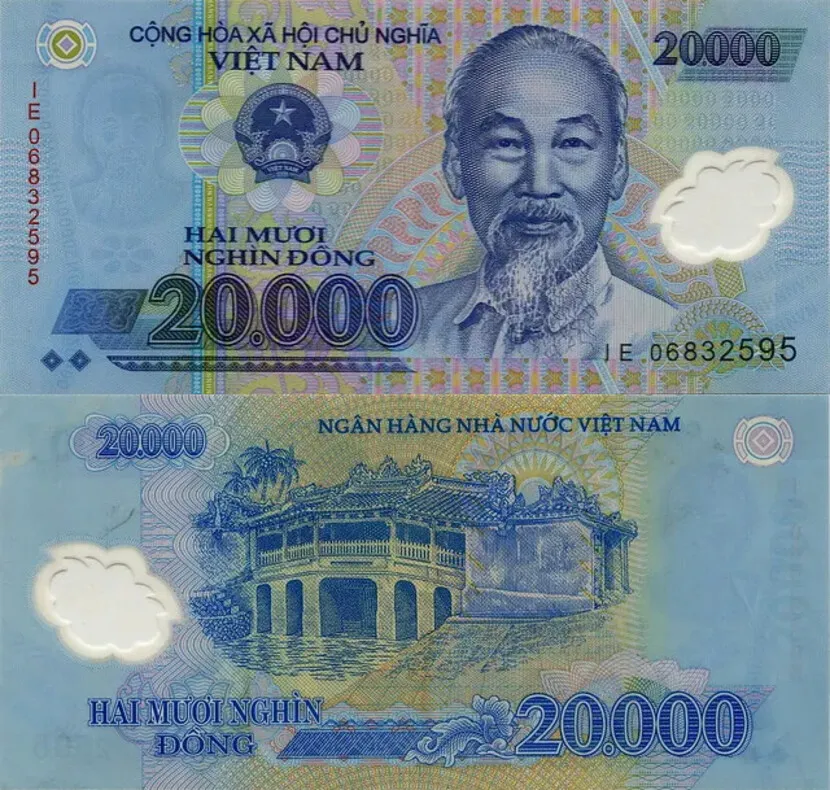
The 20,000 Dong banknote is blue, printed on the back is an image of the Japanese covered bridge in Hoi An, the symbol of this UNESCO cultural heritage site
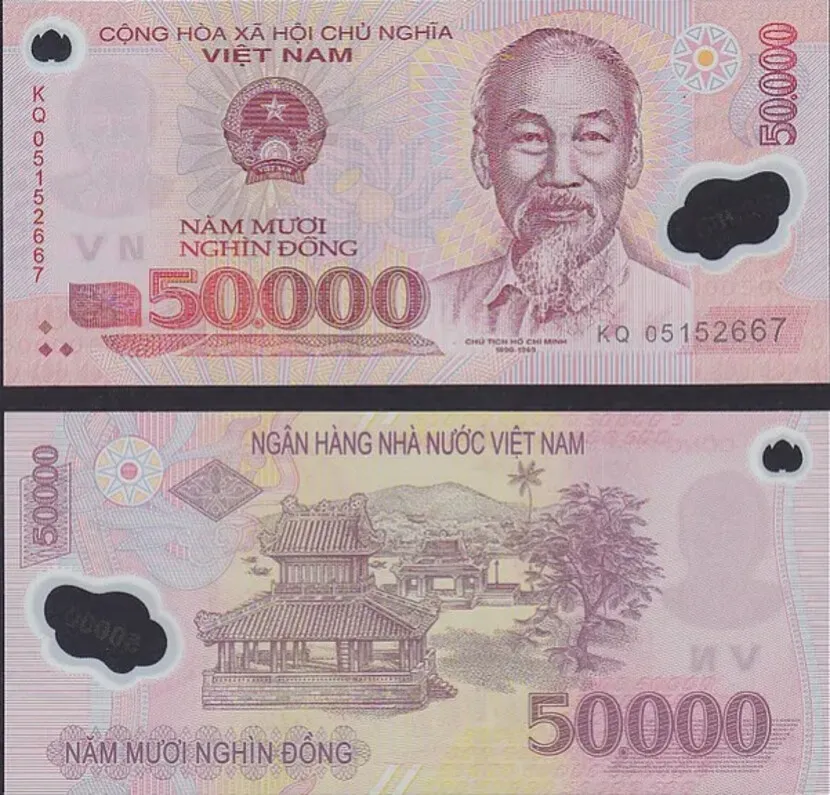
The 50,000 Dong banknote is pink and on the back is an image of the pavilions of the Imperial Citadel complex in Hue - a UNESCO heritage site
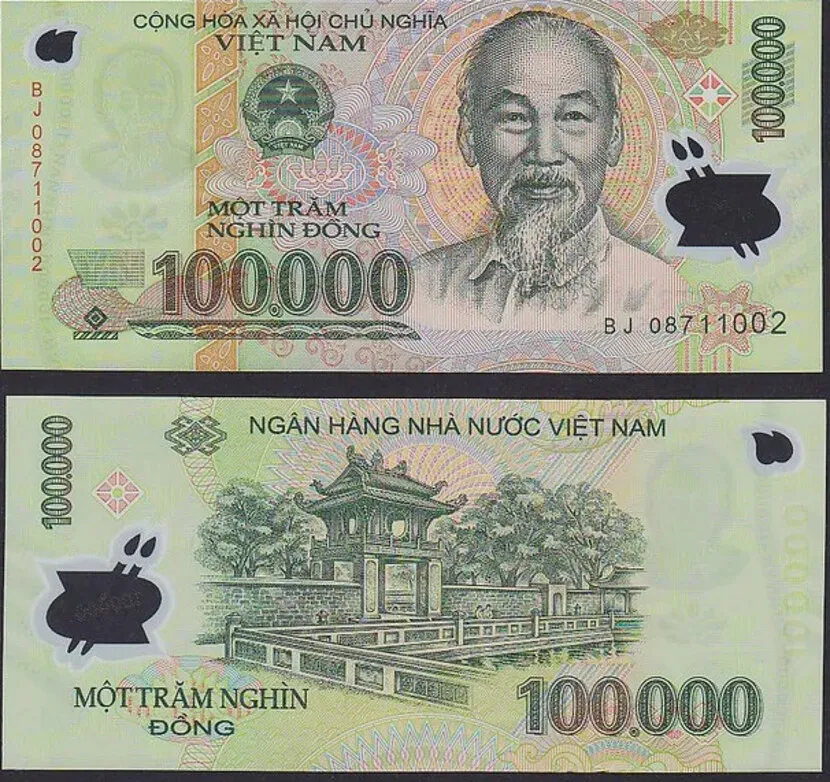
The green 100,000 note features the Temple of Literature, Vietnam's first university and one of Hanoi's iconic sites
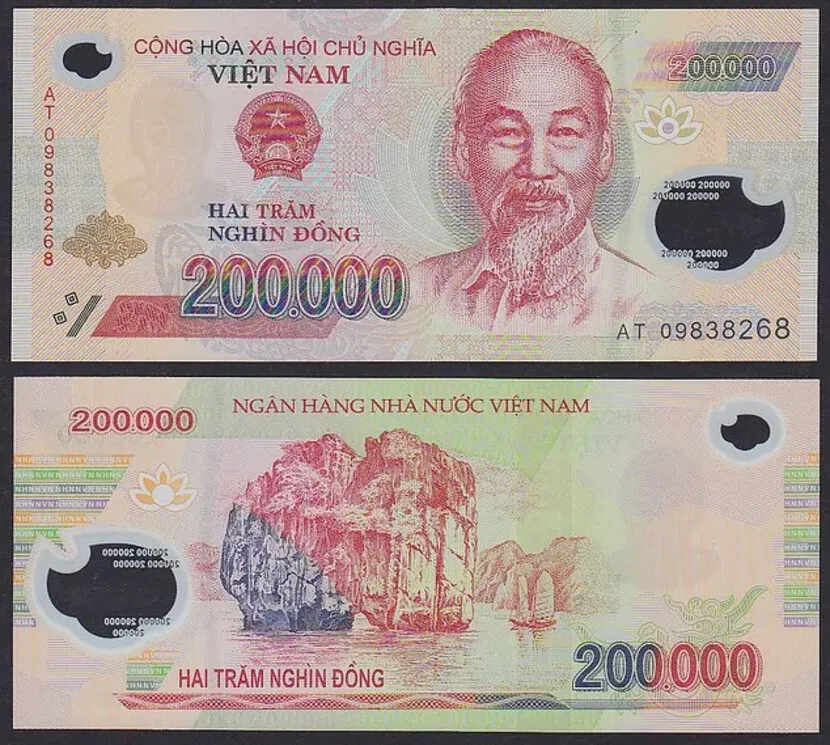
The 200,000 banknote is orange-red in colour with a print of the Dinh Huong islet located in the spectacular Ha Long Bay on the back
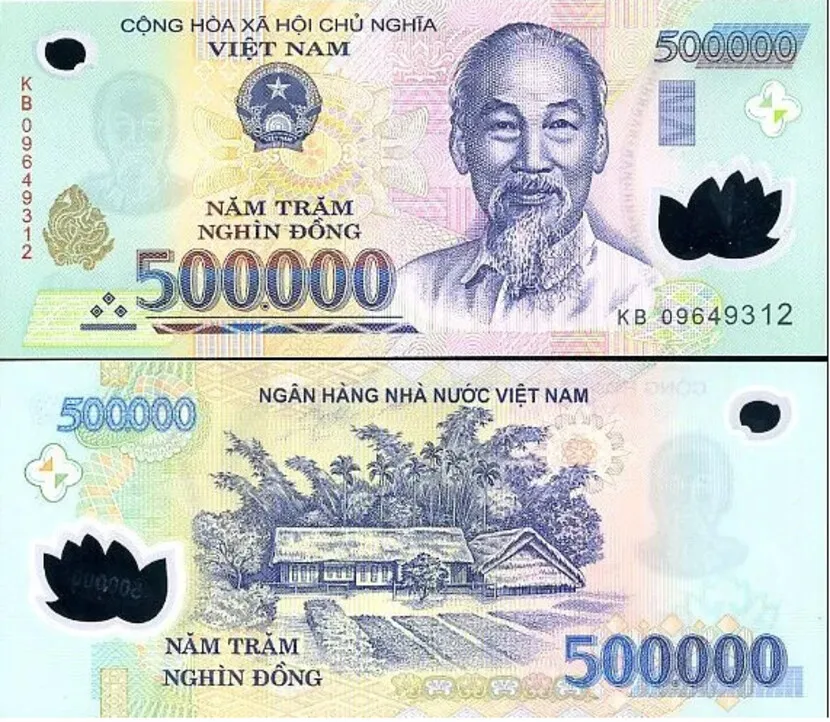
The 500,000 Dong banknote is the largest denomination with a dark blue colour and an image of President Ho Chi Minh's house in Nghe An province on the back
Paper banknotes that have often circulated in denominations of 500 Dong, 1,000 Dong, 2,000 Dong, 5,000 Dong
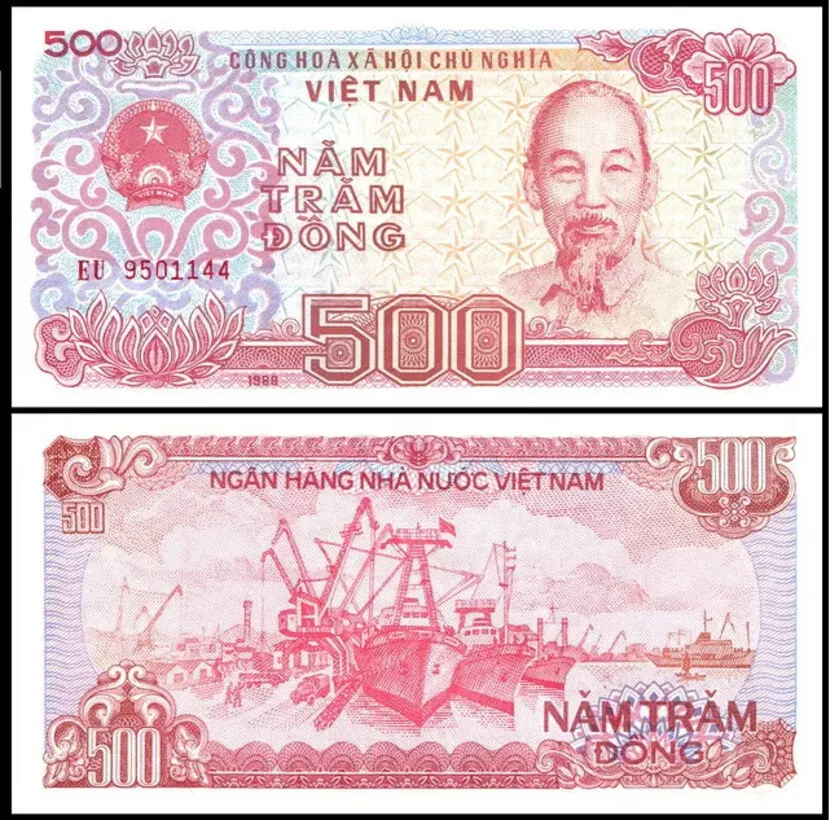
The 500 Dong banknote is pink in colour and the image on the back depicts the port of Haiphong, the largest and most important port in North Vietnam.
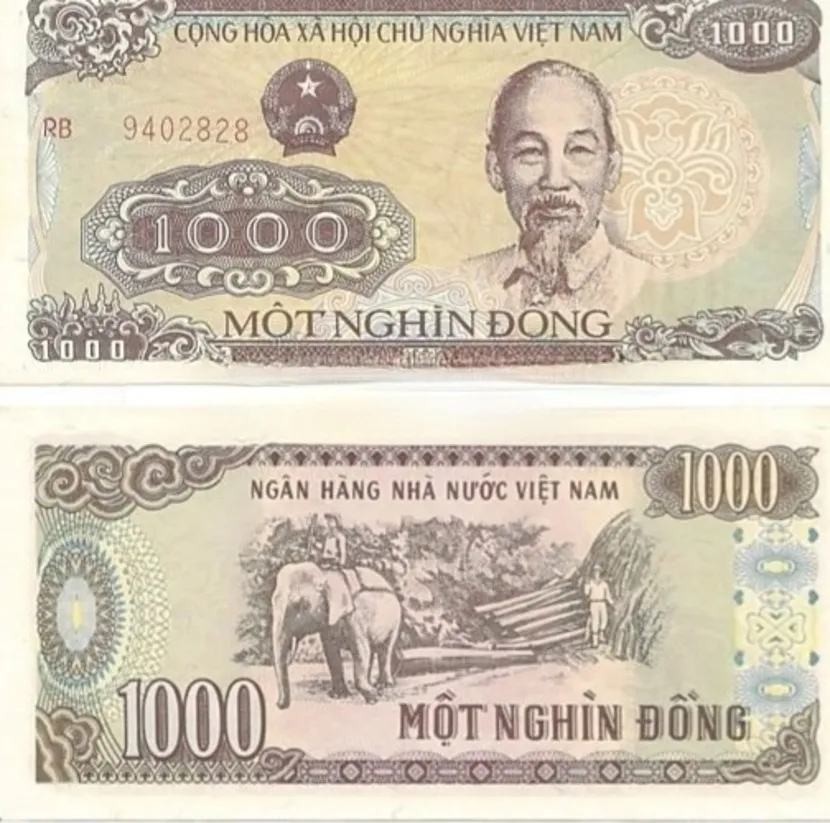
The 1,000 Dong note is purple-green and features deforestation in the central highlands of Tay Nguyen.
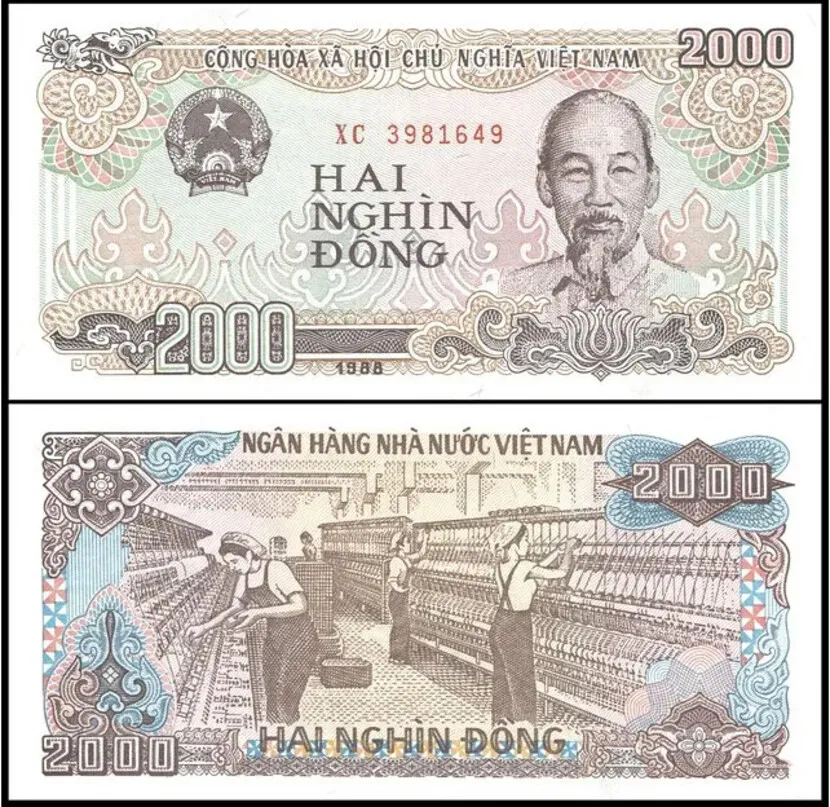
The 2,000 Dong banknote is purple-brown and on the reverse side is a picture of production activities in the Nam Dinh textile factory.
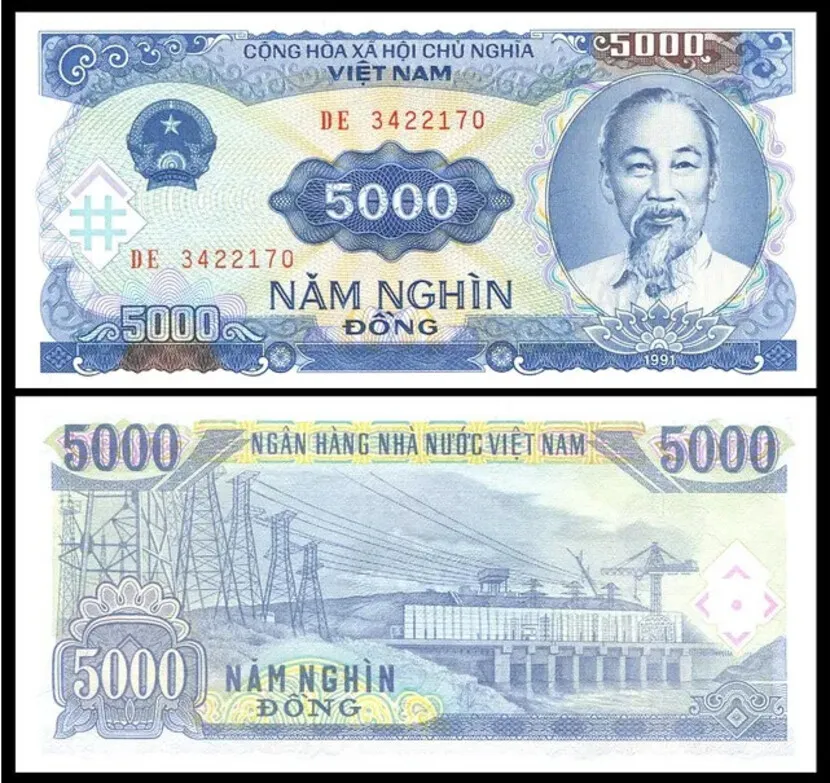
The 5,000 blue banknote features a hydroelectric power plant built on the Dong Nai River.
2. Payment in Vietnam
2.1. What are the payment methods in Vietnam?
There are many convenient payment methods for tourists in Vietnam. Take a look at some of the following:
Cash: this is the most convenient and fastest payment method that you can use anywhere, from fancy restaurants to small shops and even markets. However, try to familiarise yourself with banknotes and exchange rates when you choose to pay in cash!
Credit cards: can be used in some restaurants, hotels and souvenir shops. Some taxi companies also accept credit cards such as Mai Linh, but not all cars are equipped with Pos machines. Some places may accept your credit card with a fee of 1.7 - 2% for Visa/Master cards and about 4% for Amex cards. Therefore, you should explicitly ask for this fee to avoid unexpected payments. Visa/Master cards in Vietnam are more popular than Amex, so you should also consider and ask in advance if the place where you buy or use the service accepts this card.
Payment apps: currently, in Vietnam, it is quite popular to pay via a number of mobile apps such as Momo, Viettel Pay, and Zalopay. By simply downloading these apps and linking your current account to the app, you can easily pay via QR codes at convenience stores, supermarkets, restaurants,....
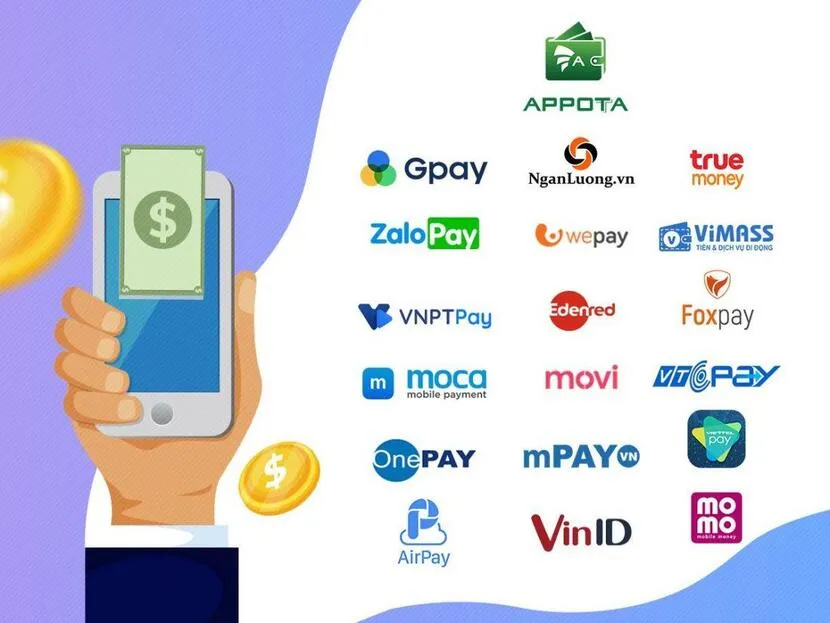
- Traveller's cheques are not widespread in Vietnam, so to avoid any unforeseen circumstances, you do not need to prepare them for your trip.
Our advice is to use cash and credit cards flexibly. You can bring your own country's currency and exchange it when you arrive in Vietnam. You can change a little bit, without changing all your money at once to avoid being confused by too many zeros in Vietnamese banknotes. In fact, with only about 40 euros you can already become a millionaire in Vietnam.
As for using your card, consider when you can use it where the commissions are good and well informed in advance.
2.2. How to change and withdraw cash in Vietnam
As explained above, Vietnam's only legal commercial currency is the Dong (VND). However, it is almost impossible to exchange Dong in advance from your country because Vietnamese currency is not so popular all around the world. This means that if you travel to Vietnam, you can bring your currency (USD, Euro, ect…) directly and exchange it for Vietnamese currency.
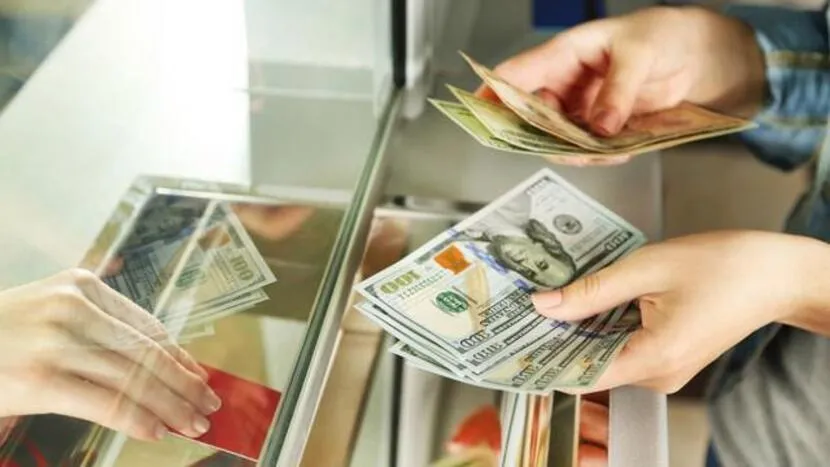
In Vietnam, you can exchange and withdraw money from:
Bank: this is the safest transaction method, ensuring that you receive real, new banknotes to use during your trip. Please note that you need to bring your passport with you to exchange or withdraw Vietnam money. Most banks are open from Monday to Friday during business hours while only a few are open on Saturday mornings. Some big banks in Vietnam are Vietcombank, Techcombank, Agribank, BIDV, Vietinbank,...
ATMs: these are available everywhere and will make it easy for you to withdraw Vietnam money at any time of the day. However, these ATMs usually have a limit of 2,000,000 - 5,000,000 VND for a single withdrawal. My only caveat is that some ATMs can swallow your card, so you have to prepare a reserve card. Some international banks such as Citibank, HSBC and ANZ allow larger withdrawals, limited to a maximum of VND 8,000,000 and VND 10,000,000.
Hotels, restaurants, jewellers: some locations will allow money to be exchanged (but not all places with currency exchange signs are allowed). You should pay special attention to the exchange rate, the integrity of the banknotes and, if possible, ask a friend or guide to help you see if the banknotes are real or fake.
Withdrawal fees: In addition to any fees you may have to pay to your bank for a cash withdrawal abroad, you will also have to pay an additional fee to the bank operating the ATM. Normally, this is between 30,000 VND and 50,000 VND, with some even charging 100,000 VND for each withdrawal.
2.3. What is the exchange rate in Vietnam?
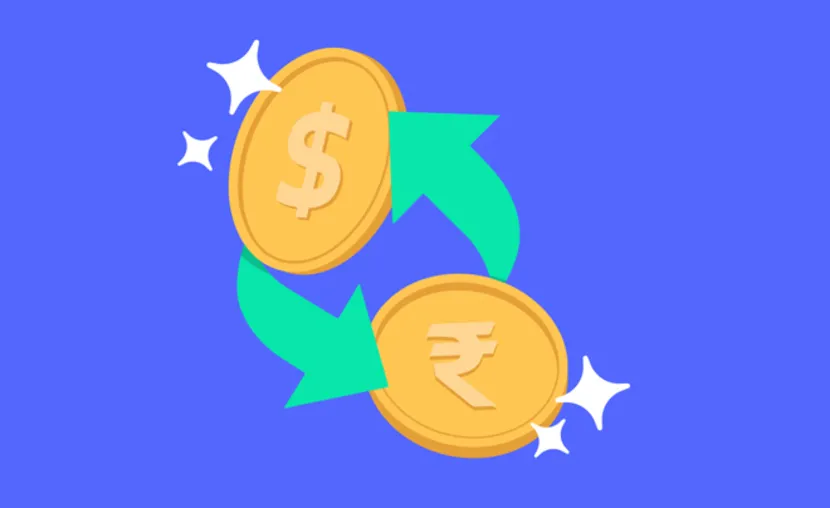
In Vietnam, you can update exchange rate information on the official websites of the big banks. You can make references by clicking on each bank:
You can also check the exchange rates on the International Exchange Rates page. Some locations may accept the exchange rate on the website xe.com.
3. Vietnam travel cost
It will be a little difficult to give an exact figure for the cost of living or travelling in Vietnam. Just like in your home country, this depends entirely on what you consume, where you choose to stay and what services you use.
In Vietnam, simple meals in popular restaurants will cost around 2 USD, while in restaurants this price is around 15 USD. In high-end restaurants, the average price per person for a meal will be between 50 USD.
If you are considering how much a trip to Vietnam will cost, I will give you some examples like this:
- The cost for a backpacking trip, simple local meals and hostels is around 50 USD/person/day
- The cost for the mid-range trip, including eating in some local restaurants and staying in 2-3 star hotels is 110 USD/person/day.
- The cost for a 4-star trip, including meals in a more typical restaurant, will be around 150 USD/person/day.
The figure may not be accurate if you use more luxury services and dine in more exclusive restaurants.
4. Vietnam tipping and service charges
Service charges and tips are quite common all over the world. In some countries, these commissions are charged directly. However, the price listed in Vietnam usually does not include these 2 charges, it is the original price of the service you use. In some 5-star hotels and restaurants, you may see a quote that includes two "+" signs, which means the price does not include 10% VAT and a 5% service charge. However, other mid-range services usually do not include service charges and tips.
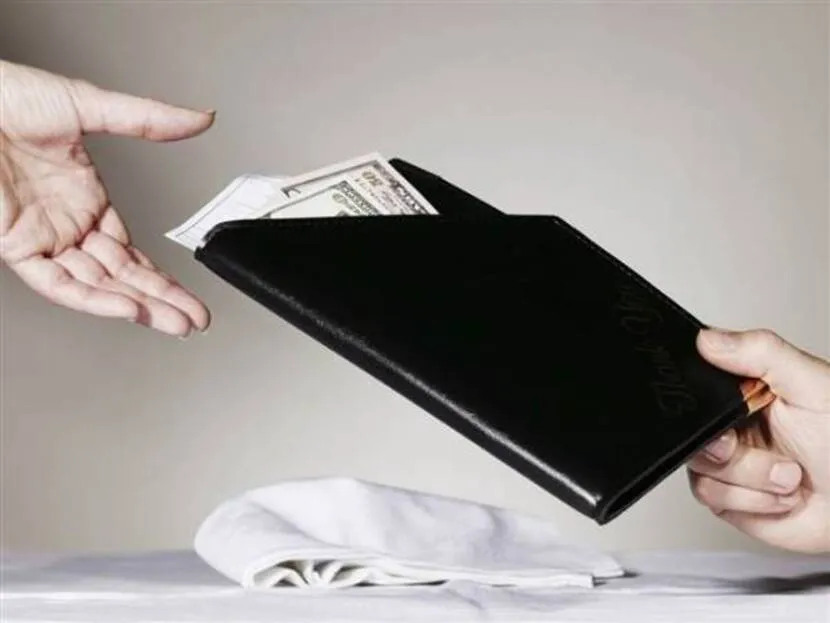
The Vietnamese do not want to force their customers to a fixed number, but will try to serve them well to receive a commensurate tip corresponding to customer satisfaction.
If you are travelling in Vietnam, you can feel free to tip for good services. The service providers will be happy and appreciate your thanks. The recommended amount is $3 to $5 per person per day.
5. Interesting facts about Vietnam money
Vietnamese burn a lot of joss paper money
Sometimes you might be surprised to see a set of one-dollar notes with a numer of 100 usd being burned in Vietnam? In reality, they are just counterfeit money. The Vietnamese believe that there is another world after death and the spirits of loved ones must also spend the money. That's why they burn counterfeit money for their relatives. Don't be surprised when they even burn iPhones, villas, mercedes cars, jewellery or even the COVID-19 Green Certificate.
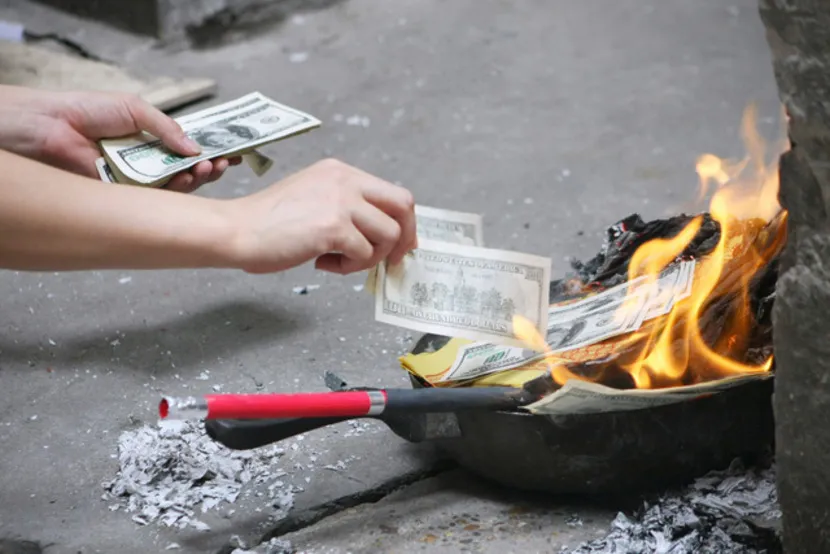
Giving lucky money to others as a blessing
In Vietnam, there is a custom of giving money as a blessing. During the Tet festival - the Vietnamese Lunar New Year, the Vietnamese have a tradition of giving children some money in different denominations as a wish for a healthy New Year. In addition, some elderly people also receive this lucky money as a wish for longevity.
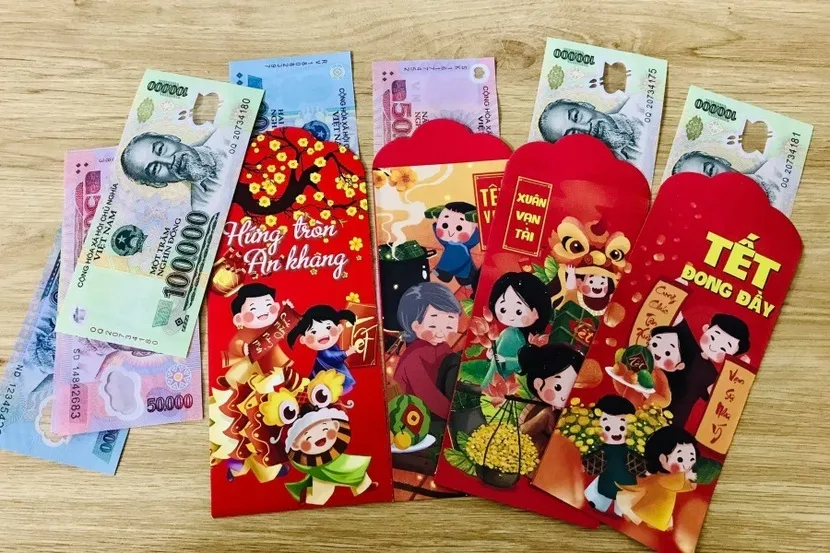
In addition, if you go to a wedding or a month-long baby shower in Vietnam to celebrate a new home, it is quite common to give money as a gift. Even at funerals, the Vietnamese also give a sum of money to the relatives of the deceased to help with funeral expenses.
Haggling At a Vietnamese Market is quite Common
Many places say that you can bargain down to half in Vietnam. In fact, bargains are quite normal in some markets with many tourists, such as Dong Xuan Market (Hanoi), Ben Thanh Market (Ho Chi Minh City), Dong Ba Market (Hue) or some ethnic minority fairs in mountainous areas such as Bac Ha market. However, bargaining for half the price is too much. The best way is to go around and check the price of your favourite item and set a price for that product yourself.
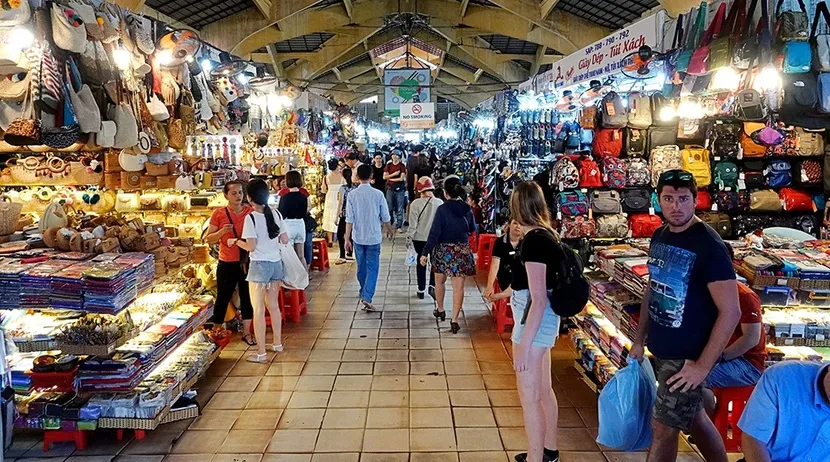
Also, it should be noted that the Vietnamese are very careful about the first customer who visits the shop because they believe that the good deal that day will depend on that customer. It would be a bit bad to go there, bargain, then buy nothing and leave. If you want to bargain, consider late-afternoon shopping.
Paying with QR code becomes more and more popular
Vietnam is a developing country. Since the outbreak of the COVID-19 epidemic in Vietnam, it has become quite popular to pay without using cash via apps and bank transfers. Vietnamese consumers are quickly adapting to digital payments and going cashless.
You will not be surprised that even stalls in local markets will have a QR code for payment. This does not mean that you can pay with a QR code or bank transfer everywhere, but it has now become a very popular payment method, from pavement restaurants to cafés or some meat and vegetable stalls in the market.
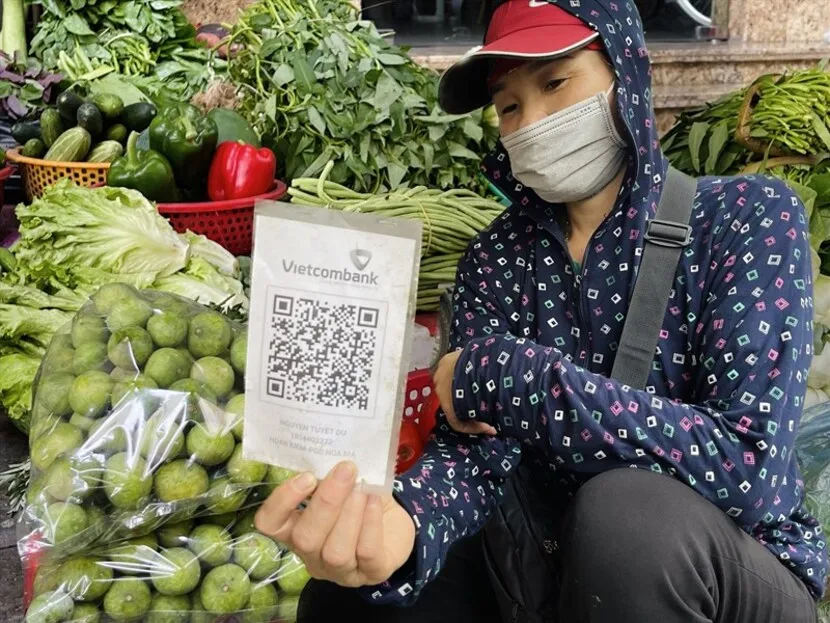
5. Extra notes
- Make sure that the banknotes you exchange are in very good condition. In fact, merchants may refuse to accept torn, damaged or inscribed banknotes.
- Confusion about the denominations of the banknotes 20,000 and 500,000 is normal because they are both polymeric and blue in colour.
- Remember that polymer banknotes might stick to each other when wet. For this reason, it is advisable to check them before handing them out to others.
- Please note that there is no maximum amount of money you can bring into Vietnam. However, if you enter with more than USD 5,000 in cash, you will have to declare it at customs.
Read more:
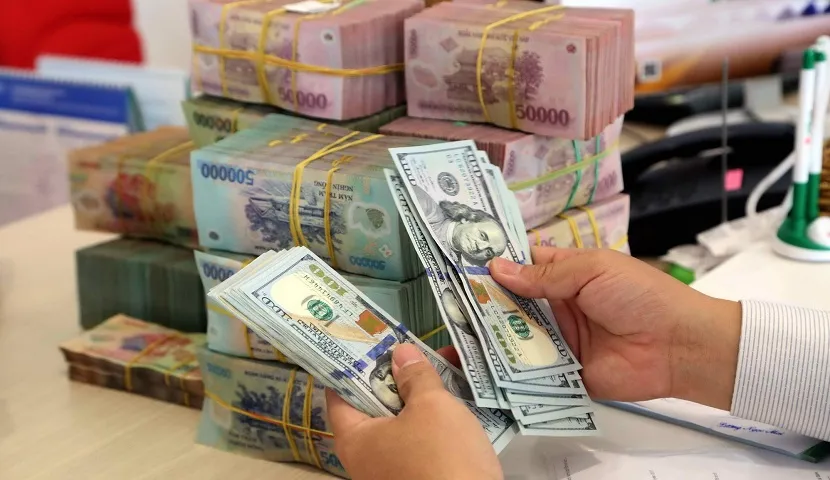







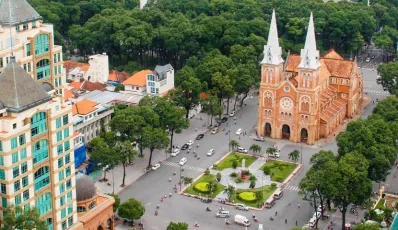


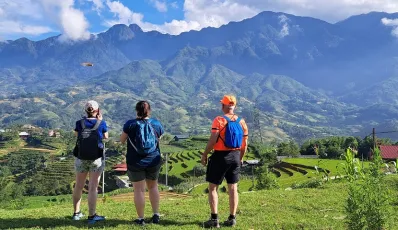
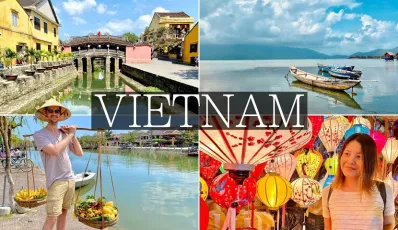
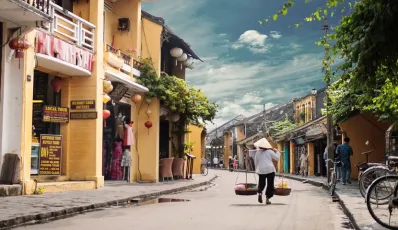
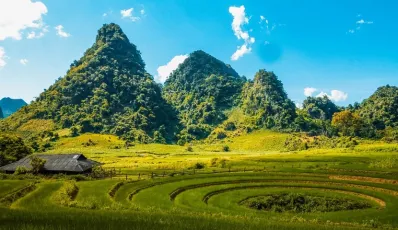

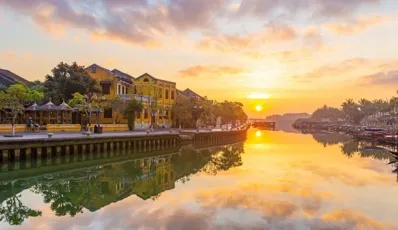

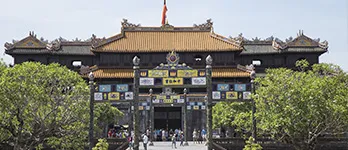
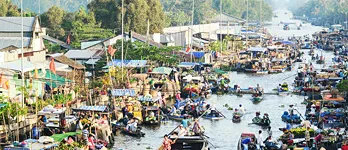

 TRAVELERS' CHOICE 2026
TRAVELERS' CHOICE 2026 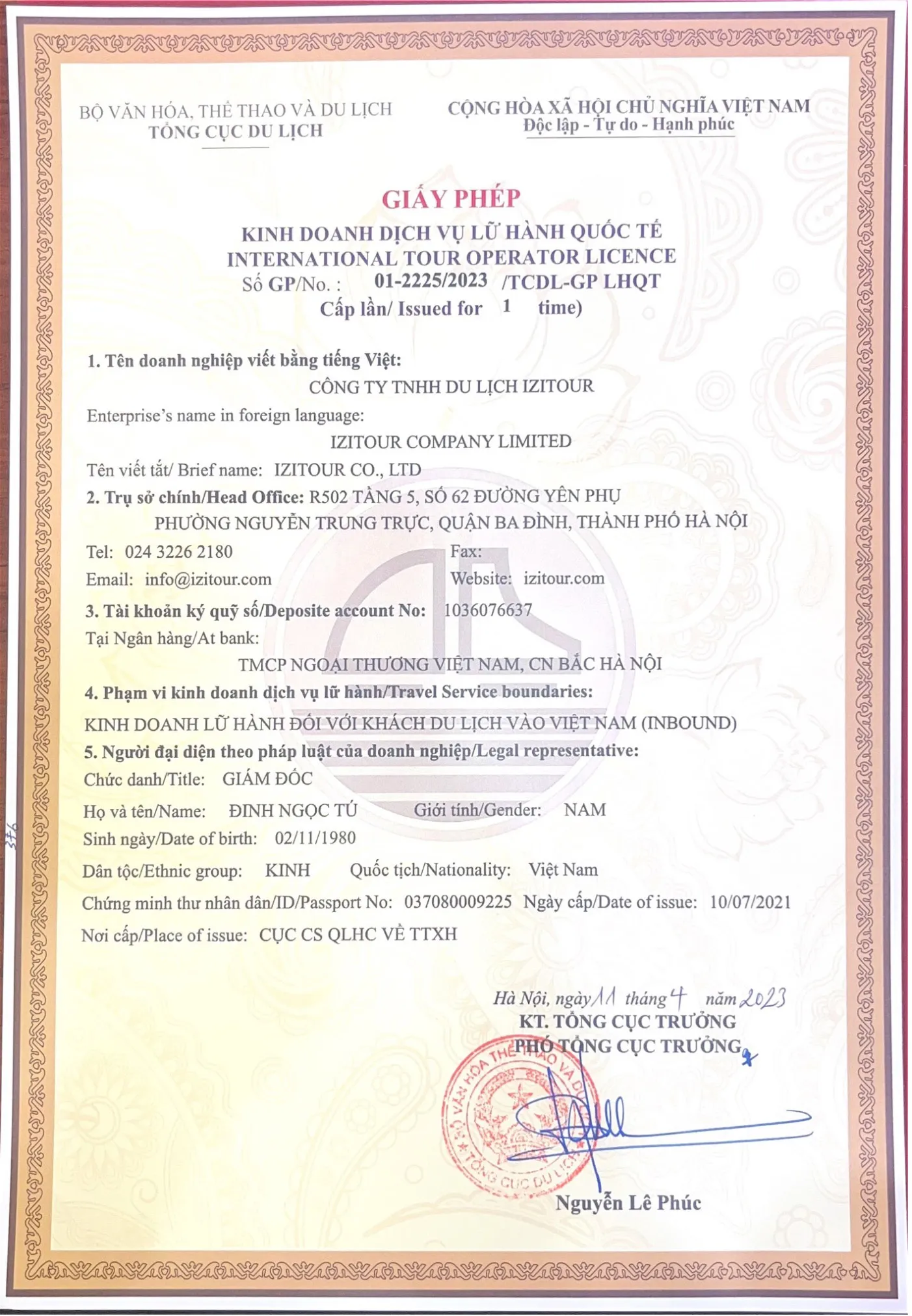



02 Comments
Italy
Un'altra cosa, è bello che il Vietnam Dong sia realizzato in polimero resistente all'acqua.
Italy
Write Reply